Xin Lu
InstructMoLE: Instruction-Guided Mixture of Low-rank Experts for Multi-Conditional Image Generation
Dec 25, 2025Abstract:Parameter-Efficient Fine-Tuning of Diffusion Transformers (DiTs) for diverse, multi-conditional tasks often suffers from task interference when using monolithic adapters like LoRA. The Mixture of Low-rank Experts (MoLE) architecture offers a modular solution, but its potential is usually limited by routing policies that operate at a token level. Such local routing can conflict with the global nature of user instructions, leading to artifacts like spatial fragmentation and semantic drift in complex image generation tasks. To address these limitations, we introduce InstructMoLE, a novel framework that employs an Instruction-Guided Mixture of Low-Rank Experts. Instead of per-token routing, InstructMoLE utilizes a global routing signal, Instruction-Guided Routing (IGR), derived from the user's comprehensive instruction. This ensures that a single, coherently chosen expert council is applied uniformly across all input tokens, preserving the global semantics and structural integrity of the generation process. To complement this, we introduce an output-space orthogonality loss, which promotes expert functional diversity and mitigates representational collapse. Extensive experiments demonstrate that InstructMoLE significantly outperforms existing LoRA adapters and MoLE variants across challenging multi-conditional generation benchmarks. Our work presents a robust and generalizable framework for instruction-driven fine-tuning of generative models, enabling superior compositional control and fidelity to user intent.
StoryMem: Multi-shot Long Video Storytelling with Memory
Dec 22, 2025
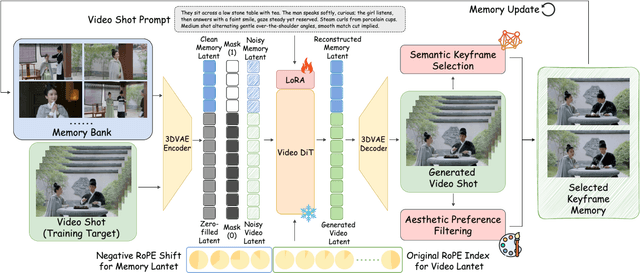
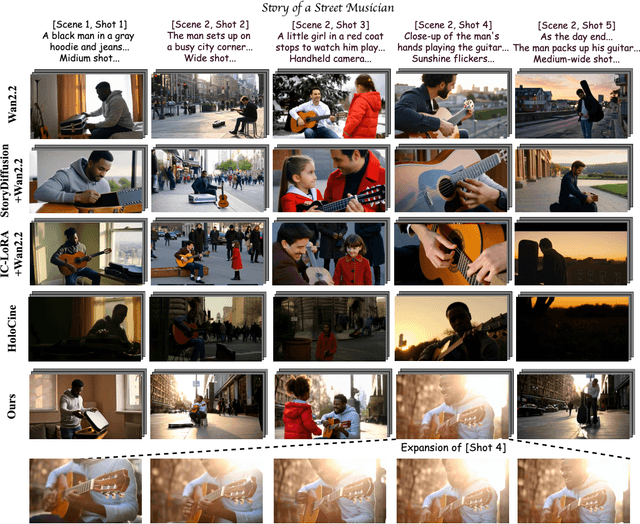
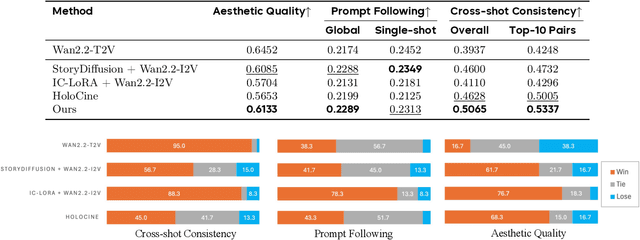
Abstract:Visual storytelling requires generating multi-shot videos with cinematic quality and long-range consistency. Inspired by human memory, we propose StoryMem, a paradigm that reformulates long-form video storytelling as iterative shot synthesis conditioned on explicit visual memory, transforming pre-trained single-shot video diffusion models into multi-shot storytellers. This is achieved by a novel Memory-to-Video (M2V) design, which maintains a compact and dynamically updated memory bank of keyframes from historical generated shots. The stored memory is then injected into single-shot video diffusion models via latent concatenation and negative RoPE shifts with only LoRA fine-tuning. A semantic keyframe selection strategy, together with aesthetic preference filtering, further ensures informative and stable memory throughout generation. Moreover, the proposed framework naturally accommodates smooth shot transitions and customized story generation applications. To facilitate evaluation, we introduce ST-Bench, a diverse benchmark for multi-shot video storytelling. Extensive experiments demonstrate that StoryMem achieves superior cross-shot consistency over previous methods while preserving high aesthetic quality and prompt adherence, marking a significant step toward coherent minute-long video storytelling.
CompEvent: Complex-valued Event-RGB Fusion for Low-light Video Enhancement and Deblurring
Nov 18, 2025Abstract:Low-light video deblurring poses significant challenges in applications like nighttime surveillance and autonomous driving due to dim lighting and long exposures. While event cameras offer potential solutions with superior low-light sensitivity and high temporal resolution, existing fusion methods typically employ staged strategies, limiting their effectiveness against combined low-light and motion blur degradations. To overcome this, we propose CompEvent, a complex neural network framework enabling holistic full-process fusion of event data and RGB frames for enhanced joint restoration. CompEvent features two core components: 1) Complex Temporal Alignment GRU, which utilizes complex-valued convolutions and processes video and event streams iteratively via GRU to achieve temporal alignment and continuous fusion; and 2) Complex Space-Frequency Learning module, which performs unified complex-valued signal processing in both spatial and frequency domains, facilitating deep fusion through spatial structures and system-level characteristics. By leveraging the holistic representation capability of complex-valued neural networks, CompEvent achieves full-process spatiotemporal fusion, maximizes complementary learning between modalities, and significantly strengthens low-light video deblurring capability. Extensive experiments demonstrate that CompEvent outperforms SOTA methods in addressing this challenging task. The code is available at https://github.com/YuXie1/CompEvent.
MSGNav: Unleashing the Power of Multi-modal 3D Scene Graph for Zero-Shot Embodied Navigation
Nov 14, 2025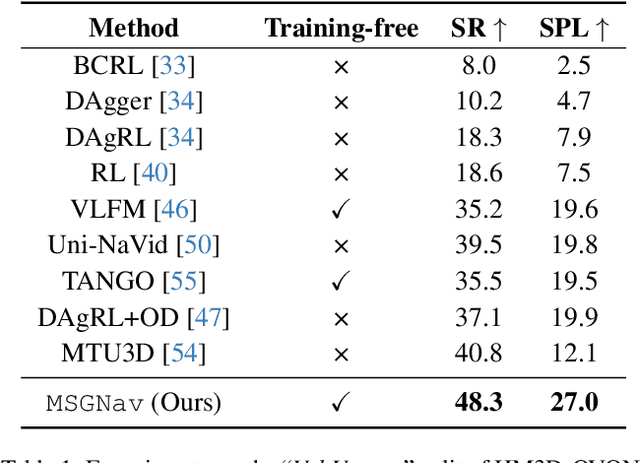
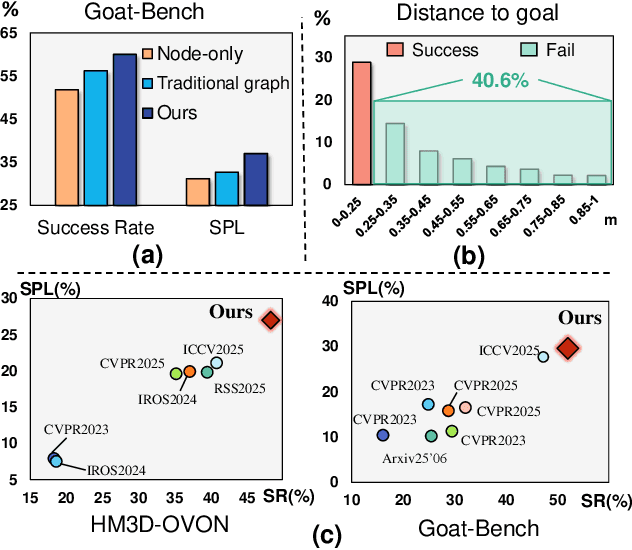
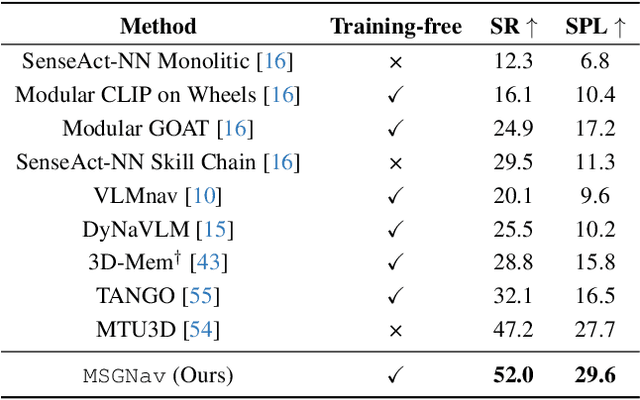
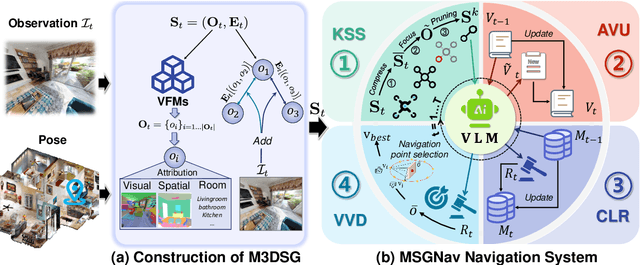
Abstract:Embodied navigation is a fundamental capability for robotic agents operating. Real-world deployment requires open vocabulary generalization and low training overhead, motivating zero-shot methods rather than task-specific RL training. However, existing zero-shot methods that build explicit 3D scene graphs often compress rich visual observations into text-only relations, leading to high construction cost, irreversible loss of visual evidence, and constrained vocabularies. To address these limitations, we introduce the Multi-modal 3D Scene Graph (M3DSG), which preserves visual cues by replacing textual relation
DiSE: A diffusion probabilistic model for automatic structure elucidation of organic compounds
Oct 30, 2025Abstract:Automatic structure elucidation is essential for self-driving laboratories as it enables the system to achieve truly autonomous. This capability closes the experimental feedback loop, ensuring that machine learning models receive reliable structure information for real-time decision-making and optimization. Herein, we present DiSE, an end-to-end diffusion-based generative model that integrates multiple spectroscopic modalities, including MS, 13C and 1H chemical shifts, HSQC, and COSY, to achieve automated yet accurate structure elucidation of organic compounds. By learning inherent correlations among spectra through data-driven approaches, DiSE achieves superior accuracy, strong generalization across chemically diverse datasets, and robustness to experimental data despite being trained on calculated spectra. DiSE thus represents a significant advance toward fully automated structure elucidation, with broad potential in natural product research, drug discovery, and self-driving laboratories.
NTIRE 2025 Image Shadow Removal Challenge Report
Jun 18, 2025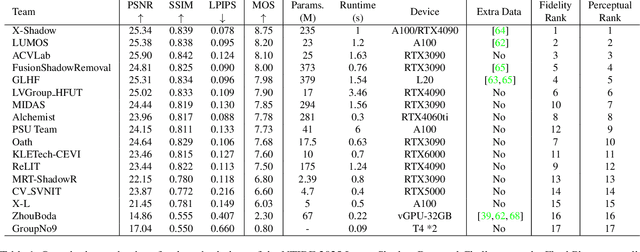

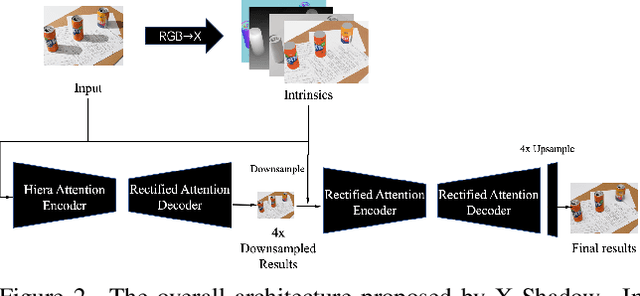
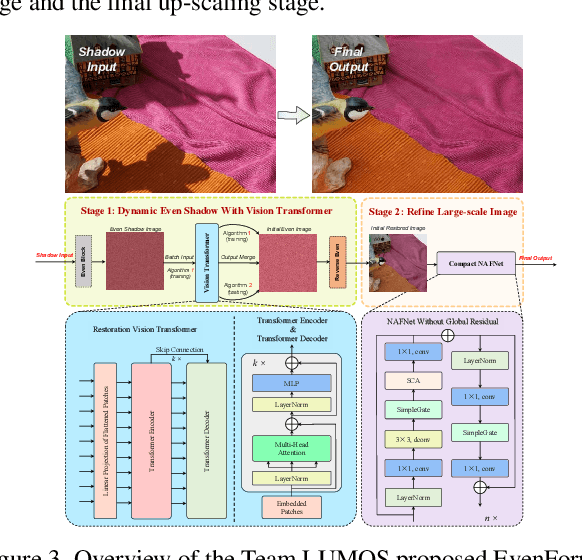
Abstract:This work examines the findings of the NTIRE 2025 Shadow Removal Challenge. A total of 306 participants have registered, with 17 teams successfully submitting their solutions during the final evaluation phase. Following the last two editions, this challenge had two evaluation tracks: one focusing on reconstruction fidelity and the other on visual perception through a user study. Both tracks were evaluated with images from the WSRD+ dataset, simulating interactions between self- and cast-shadows with a large number of diverse objects, textures, and materials.
GGBall: Graph Generative Model on Poincaré Ball
Jun 08, 2025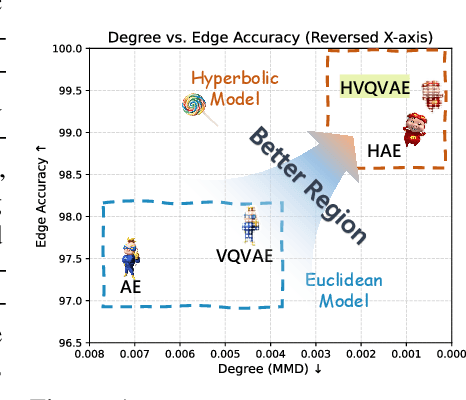

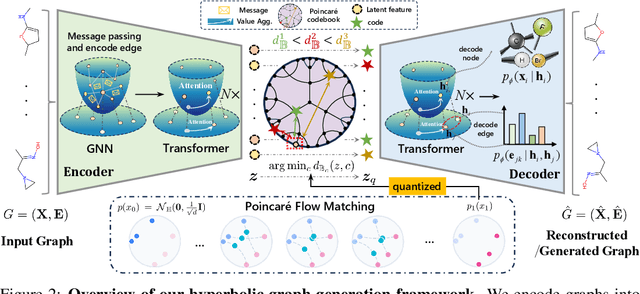
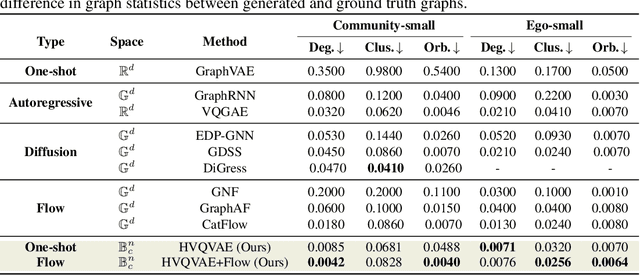
Abstract:Generating graphs with hierarchical structures remains a fundamental challenge due to the limitations of Euclidean geometry in capturing exponential complexity. Here we introduce \textbf{GGBall}, a novel hyperbolic framework for graph generation that integrates geometric inductive biases with modern generative paradigms. GGBall combines a Hyperbolic Vector-Quantized Autoencoder (HVQVAE) with a Riemannian flow matching prior defined via closed-form geodesics. This design enables flow-based priors to model complex latent distributions, while vector quantization helps preserve the curvature-aware structure of the hyperbolic space. We further develop a suite of hyperbolic GNN and Transformer layers that operate entirely within the manifold, ensuring stability and scalability. Empirically, our model reduces degree MMD by over 75\% on Community-Small and over 40\% on Ego-Small compared to state-of-the-art baselines, demonstrating an improved ability to preserve topological hierarchies. These results highlight the potential of hyperbolic geometry as a powerful foundation for the generative modeling of complex, structured, and hierarchical data domains. Our code is available at \href{https://github.com/AI4Science-WestlakeU/GGBall}{here}.
ProDiff: Prototype-Guided Diffusion for Minimal Information Trajectory Imputation
May 29, 2025Abstract:Trajectory data is crucial for various applications but often suffers from incompleteness due to device limitations and diverse collection scenarios. Existing imputation methods rely on sparse trajectory or travel information, such as velocity, to infer missing points. However, these approaches assume that sparse trajectories retain essential behavioral patterns, which place significant demands on data acquisition and overlook the potential of large-scale human trajectory embeddings. To address this, we propose ProDiff, a trajectory imputation framework that uses only two endpoints as minimal information. It integrates prototype learning to embed human movement patterns and a denoising diffusion probabilistic model for robust spatiotemporal reconstruction. Joint training with a tailored loss function ensures effective imputation. ProDiff outperforms state-of-the-art methods, improving accuracy by 6.28\% on FourSquare and 2.52\% on WuXi. Further analysis shows a 0.927 correlation between generated and real trajectories, demonstrating the effectiveness of our approach.
EL4NER: Ensemble Learning for Named Entity Recognition via Multiple Small-Parameter Large Language Models
May 29, 2025Abstract:In-Context Learning (ICL) technique based on Large Language Models (LLMs) has gained prominence in Named Entity Recognition (NER) tasks for its lower computing resource consumption, less manual labeling overhead, and stronger generalizability. Nevertheless, most ICL-based NER methods depend on large-parameter LLMs: the open-source models demand substantial computational resources for deployment and inference, while the closed-source ones incur high API costs, raise data-privacy concerns, and hinder community collaboration. To address this question, we propose an Ensemble Learning Method for Named Entity Recognition (EL4NER), which aims at aggregating the ICL outputs of multiple open-source, small-parameter LLMs to enhance overall performance in NER tasks at less deployment and inference cost. Specifically, our method comprises three key components. First, we design a task decomposition-based pipeline that facilitates deep, multi-stage ensemble learning. Second, we introduce a novel span-level sentence similarity algorithm to establish an ICL demonstration retrieval mechanism better suited for NER tasks. Third, we incorporate a self-validation mechanism to mitigate the noise introduced during the ensemble process. We evaluated EL4NER on multiple widely adopted NER datasets from diverse domains. Our experimental results indicate that EL4NER surpasses most closed-source, large-parameter LLM-based methods at a lower parameter cost and even attains state-of-the-art (SOTA) performance among ICL-based methods on certain datasets. These results show the parameter efficiency of EL4NER and underscore the feasibility of employing open-source, small-parameter LLMs within the ICL paradigm for NER tasks.
How Does Sequence Modeling Architecture Influence Base Capabilities of Pre-trained Language Models? Exploring Key Architecture Design Principles to Avoid Base Capabilities Degradation
May 24, 2025Abstract:Pre-trained language models represented by the Transformer have been proven to possess strong base capabilities, and the representative self-attention mechanism in the Transformer has become a classic in sequence modeling architectures. Different from the work of proposing sequence modeling architecture to improve the efficiency of attention mechanism, this work focuses on the impact of sequence modeling architectures on base capabilities. Specifically, our concern is: How exactly do sequence modeling architectures affect the base capabilities of pre-trained language models? In this work, we first point out that the mixed domain pre-training setting commonly adopted in existing architecture design works fails to adequately reveal the differences in base capabilities among various architectures. To address this, we propose a limited domain pre-training setting with out-of-distribution testing, which successfully uncovers significant differences in base capabilities among architectures at an early stage. Next, we analyze the base capabilities of stateful sequence modeling architectures, and find that they exhibit significant degradation in base capabilities compared to the Transformer. Then, through a series of architecture component analysis, we summarize a key architecture design principle: A sequence modeling architecture need possess full-sequence arbitrary selection capability to avoid degradation in base capabilities. Finally, we empirically validate this principle using an extremely simple Top-1 element selection architecture and further generalize it to a more practical Top-1 chunk selection architecture. Experimental results demonstrate our proposed sequence modeling architecture design principle and suggest that our work can serve as a valuable reference for future architecture improvements and novel designs.
 Add to Chrome
Add to Chrome Add to Firefox
Add to Firefox Add to Edge
Add to Edge